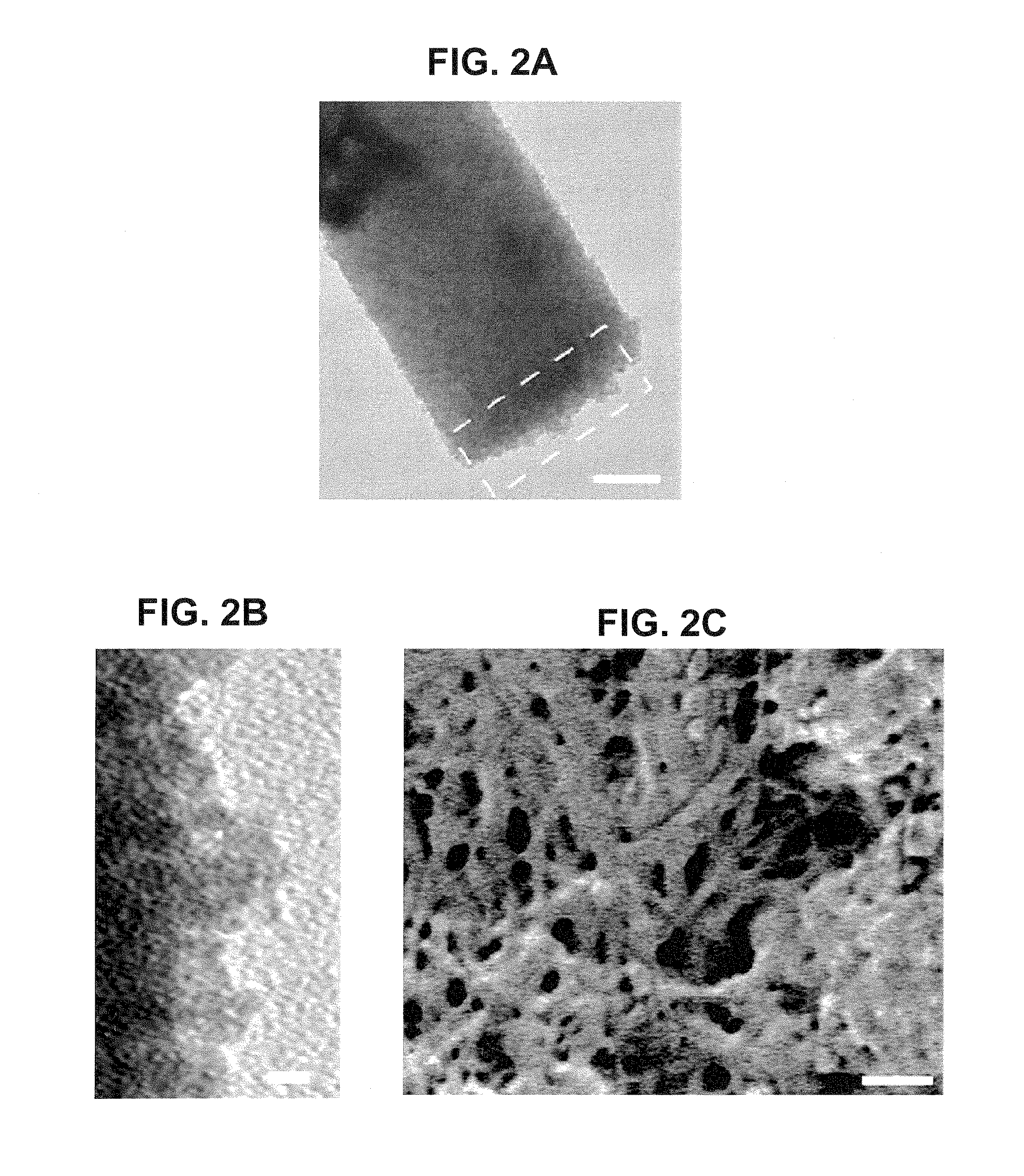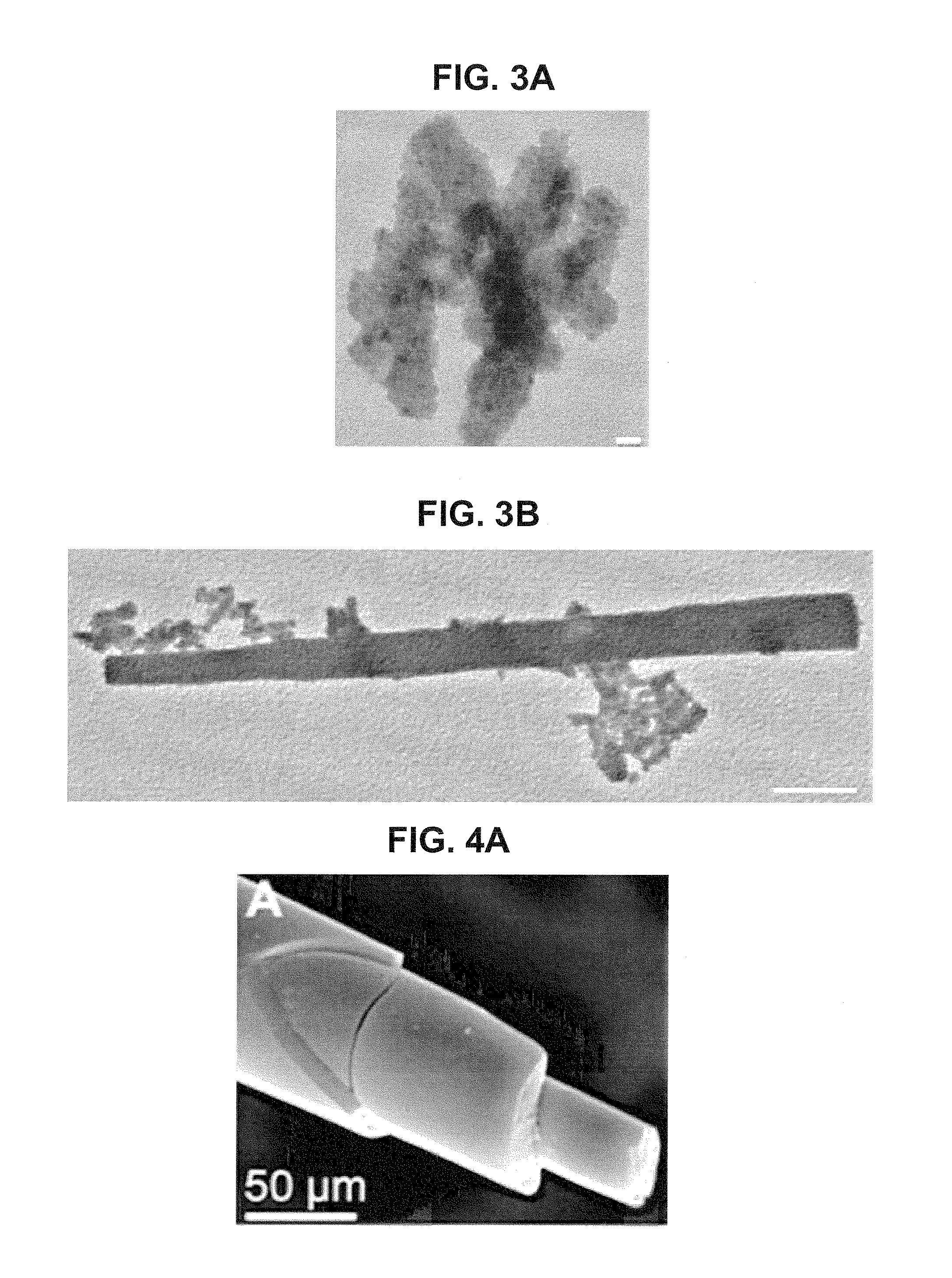Use of Silintaphin for the Structure-Directed Fabrication of (Nano)Composite Materials in Medicine and (Nano)Technology
- Summary
- Abstract
- Description
- Claims
- Application Information
AI Technical Summary
Benefits of technology
Problems solved by technology
Method used
Image
Examples
Embodiment Construction
[0042]This invention relates to the unexpected waveguiding properties of nanorods, nanowires, and nanobullets formed by self-assembly of silica and other metal oxides (nanoparticulate or soluble enzyme substrates) using either silintaphin-1 alone or silintaphin-1 and silicatein. Silintaphin-1 and silicatein are two proteins with unique properties: In vivo they act in concert in the assembly of nanoscale silica particles (nanospheres) to skeletal structures. The opto-mechanical properties of the resulting nanocomposite waveguides, consisting of both a proteinaceous and an inorganic component, are superior to those consisting of the inorganic component alone. Thus, the nanorods and nanowires formed can be used as novel optical fiber-based bacterial sensors and evanescent wave sensors that can be fabricated at mild (low temperature and near neutral pH) conditions.
[0043]In one preferred aspect thereof, the present invention relates to a method for the fabrication of nanorods / nanowires / n...
PUM
| Property | Measurement | Unit |
|---|---|---|
| Fraction | aaaaa | aaaaa |
| Composition | aaaaa | aaaaa |
Abstract
Description
Claims
Application Information
 Login to View More
Login to View More - R&D
- Intellectual Property
- Life Sciences
- Materials
- Tech Scout
- Unparalleled Data Quality
- Higher Quality Content
- 60% Fewer Hallucinations
Browse by: Latest US Patents, China's latest patents, Technical Efficacy Thesaurus, Application Domain, Technology Topic, Popular Technical Reports.
© 2025 PatSnap. All rights reserved.Legal|Privacy policy|Modern Slavery Act Transparency Statement|Sitemap|About US| Contact US: help@patsnap.com



